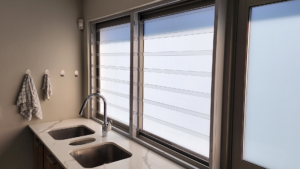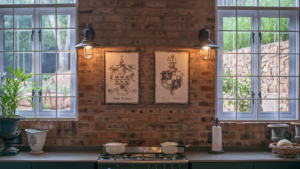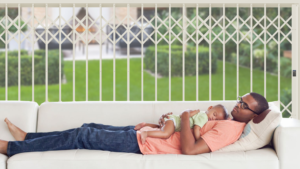Door locks are an essential part of ensuring the safety of your home as they ensure that the entry doors to your property can prevent potential intruders from gaining access. There are many door locks available on the market, and each of these door locks plays a different role in keeping your home safe. We will offer a complete guide of the different types of door locks your home might have and the role they play in keeping your home safe.
- Knob Locks
Knob locks are a common type of door lock that is installed on internal doors, as these door locks are not ideal for external use due to their limited security. These locks have a locking mechanism within the doorknob. They include knobs on either side of the door, leading to locking the door from the outside or inside. Knob locks can only be installed on exterior doors to provide extra security if used with deadbolt locks. Knob locks are also an inexpensive choice, but they are incredibly secure. These door locks also allow you to choose from a range of styles and finishes, which will enable you to coordinate with other door hardware.
- Mortise Locks
Mortise locks are robust door locks primarily used for commercial doors, apartment doors, and entry glass doors. These door locks generally consist of intricate hardware mounted in the door and then held in place using a set screw, and it utilizes a cam that actuates the locking hardware. Mortise locks are perfect to use if you are looking for a lock that requires little to no maintenance, if you want standard or custom functions, such as deadbolts, and if you require more lever and trim design options. Mortise locks are also known to combine functionality, design, and durability in one lock, ensuring that they meet the needs of any project.
- Padlocks
Padlocks are the simplest type of door locks as they are portable. Unlike other door locks, padlocks are not permanently attached to a door or anything that it can be used for. The padlocks can be fixed to gates, doors, fences or chains to prevent theft by securing the space. These locks include a shouldered shackle, which is a part in which the padlock’s shoulders raise the sides of the shackle to prevent bolt cutters from cutting through the lock.
There are various kinds of padlocks which are keyed and combination padlocks. Keyed padlocks work with a key, and they turn when they are inserted to release the lock. Keyed padlocks come in re-keyable and non-re-keyable types. Key-retaining padlocks do not permit the key to be pulled out once the lock is opened, and non-re-keyable padlocks are not easy to change.
Combination padlocks include dials with several digits or letters that you can rotate. These locks are helpful as they do not require a key. Once the numbers or letters are lined up into the right combination, the padlock will release, which opens the lock.
- Deadbolt Locks
Deadlocks are the most popular type of door locks, and they are primarily used for residential properties. You can open these door locks by turning a key or knob without using a spring. There are three types of deadbolt locks; double cylinder deadbolts, single cylinder deadbolts, and lockable thumb-turn. Deadbolts include a unique locking mechanism that reduces the risk of forced entry by creating a secure lock system that makes it virtually impossible for a burglar to break in through the door.
A lockable thumb turn is a hybrid of a double cylinder and a single-cylinder as it features a thumb turn inside, which works like a single cylinder deadbolt, except the thumb turn can be locked and unlocked with a key.
Single-cylinder deadbolts can be activated with a thumb piece on the interior side, and for the exterior side, the deadbolt lock can be activated using a key. A double cylinder deadbolt uses a key to activate both sides of the door. The thumb turn can be locked easily so that even if someone has access to the door from the inside, that person will not unlock the deadbolt.
- Electronic Locks
Electronic locks do not need keys to lock and unlock them as they include a keypad or a card system that uses a unique code or key. These keyless locks are mainly used in hotel rooms and offices, and they have started to gain popularity in residential properties and apartment buildings. When different people use different keycards, electronic locks will record which person accessed the lock, making it easier to determine who accessed the property or room at a particular time. Electronic locks keep track of how often they are used, and they even create a log, including the time of entry and departure to a property or room. These logs assist in maintaining better security practices, and the logs can be beneficial when suspicious activity is observed.
See Explaining Retractable Security Gates’ Three Slam Lock Modes of Operation.



